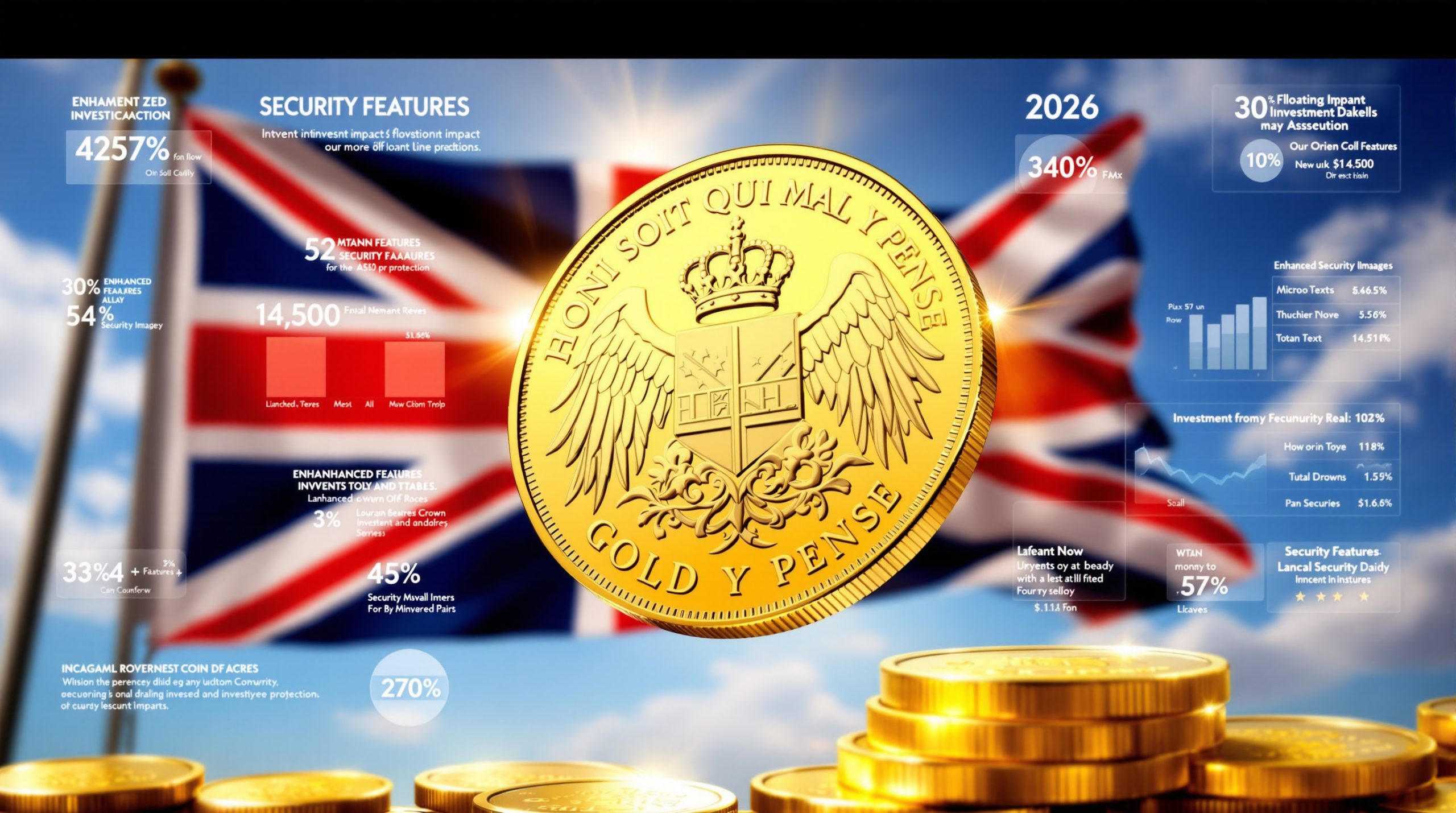Why Should You Consider Owning Physical Gold?
Physical gold ownership represents one of the most fundamental hedges against systemic financial uncertainty in today's volatile economic landscape. Unlike digital assets or paper investments, physical gold provides tangible wealth protection that exists completely outside traditional banking systems and financial infrastructure.
When you own physical gold, you possess a universally recognized store of value that has maintained its worth across civilizations for over 5,000 years. As portfolio manager Michael Pento emphatically states: "I don't trust the currency. I don't trust the government. I don't trust the financial system. So why in heck would I trust my gold to be held in a financial institution?"
This sentiment captures the core rationale behind owning physical gold – sovereignty over your financial assets during uncertain times.
Understanding Gold as a Store of Value
Gold's remarkable persistence as a store of value stems from unique properties that no other asset class can match:
- Intrinsic scarcity: Annual mining supply adds only about 3,000 tonnes to existing reserves, representing less than 1.7% of above-ground gold
- Geological stability: Gold is chemically inert (atomic number 79), resistant to corrosion, and does not degrade over time
- Universal recognition: Central banks worldwide hold over 35,715 tonnes as official reserves (IMF, 2024)
- Independent value: Gold maintains worth regardless of any government's financial stability
Unlike fiat currencies that consistently lose purchasing power through inflation, gold as safe haven has maintained its ability to preserve wealth across centuries. This becomes particularly evident during periods of economic instability, currency devaluation, or financial system stress.
The Critical Distinction Between Physical and Paper Gold
Many investors fail to understand the crucial difference between owning physical gold and holding "paper gold" instruments:
Physical gold ownership means direct possession and control of the metal itself. Whether stored in a home safe, private vault, or secure location of your choosing, you maintain complete authority over your assets without depending on any financial institution.
Paper gold (ETFs, certificates, mining stocks) represents merely a claim on gold held by third parties. While these instruments provide price exposure and potential appreciation, they introduce counterparty risk – the very risk physical gold ownership eliminates.
"Take 5% of your portfolio of your net worth and put it into physical gold that you control," advises Michael Pento, emphasizing direct ownership as fundamental to true wealth protection.
Recent financial crises have repeatedly demonstrated the vulnerability of paper assets. During the 2013 Cyprus banking crisis, for instance, depositors lost €47.5 billion through government-mandated bail-ins – a scenario physical gold holders remained completely insulated from.
What Are the Primary Benefits of Holding Physical Gold?
Physical gold provides unique advantages that become increasingly valuable during periods of financial instability. As global economic uncertainties mount, these benefits make physical gold an essential component of any comprehensive wealth protection strategy.
Independence from Financial Institutions
When you hold physical gold outside the banking system, you gain several critical advantages:
- Zero counterparty risk: Unlike deposits, bonds, or ETFs, physical gold has no issuer that can default
- Continuous accessibility: Your gold remains available even during bank holidays, financial crises, or digital system failures
- Immunity from bail-ins: Government-mandated deposit confiscations (like Cyprus in 2013) cannot affect physically-held assets
- Privacy protection: Physical gold ownership offers financial privacy increasingly absent in the digital banking world
This independence becomes particularly valuable during systemic financial stress. When markets freeze, electronic trading halts, or banking systems face liquidity crises, physical gold remains accessible and tradable.
Protection Against Currency Devaluation
Gold's millennia-long history as money makes it the ultimate hedge against the ongoing devaluation of fiat currencies:
- Consistent purchasing power: While currencies lose value through inflation, gold maintains relative stability
- Protection from monetary policy errors: Central bank money creation dilutes currency value but typically increases gold prices
- International recognition: Gold maintains value regardless of which government issued your currency
- Wealth preservation during hyperinflation: Gold has historically protected wealth during extreme currency collapses
This protection becomes even more valuable in today's environment of unprecedented monetary expansion. Since 2020, major central banks have expanded their balance sheets by trillions, creating currency devaluation pressure that gold naturally hedges against.
Portfolio Resilience During Market Turbulence
Physical gold provides remarkable portfolio stability during market disruptions:
- Negative correlation: Gold typically shows a -0.37 correlation with the S&P 500 during recessions (NBER, 2023)
- Crisis appreciation: During the 2008 financial crisis, gold rose 17% while the S&P 500 fell 38%
- Liquidity maintenance: Gold remains easily convertible to cash even when other markets freeze
- Psychological security: The tangible nature of gold provides confidence during uncertain market conditions
This stabilizing effect explains why sophisticated institutional investors, including the Yale University Endowment, maintain significant gold allocations (7.5% as of 2023) despite gold's lack of yield or dividends.
How Much Physical Gold Should You Own?
Determining the right allocation to physical gold requires balancing protection against systemic risks with the opportunity costs of not investing those funds elsewhere. Expert consensus has emerged around specific guidelines that apply to most investors.
The 5% Portfolio Allocation Principle
Financial experts, including portfolio manager Michael Pento, consistently recommend allocating approximately 5% of your net worth to physical gold as a foundational protection strategy. This allocation:
- Provides meaningful protection: 5% is sufficient to offer substantial hedging benefits without overexposure
- Balances opportunity cost: Maintains 95% of portfolio for yield-generating or growth assets
- Aligns with institutional practice: Central banks globally hold 15.5% of reserves in gold (IMF, 2024)
- Creates psychological security: A tangible asset base during market turbulence
This 5% allocation represents a prudent middle ground between insufficient protection and excessive concentration. For a $500,000 portfolio, this translates to approximately $25,000 in physical gold – enough to provide meaningful security while allowing the majority of assets to pursue growth.
Balancing Physical Ownership with Investment Exposure
For investors seeking both protection and potential price appreciation, a two-pronged approach often works best:
- Physical gold (5%): For wealth preservation and system-independent security
- Paper gold (0-10%): ETFs, mining stocks for additional price exposure with greater liquidity
"I also own gold miners and gold ETFs for price appreciation, but that's not the same thing as physical gold that you control," explains Michael Pento, highlighting the complementary nature of these approaches.
This balanced strategy recognizes the distinct purposes each form serves:
| Form | Primary Purpose | Risk Profile | Liquidity |
|---|---|---|---|
| Physical Gold | Wealth preservation | No counterparty risk | Moderate (dealer network) |
| Gold ETFs | Price exposure | Custodial/counterparty risk | High (market traded) |
| Mining Stocks | Leveraged exposure | Operational/market risk | High (market traded) |
Active managers like Pento adjust these allocations based on market conditions, increasing exposure during periods of heightened systemic risk and reducing during strong economic expansion.
How Does Physical Gold Compare to Other Precious Metals?
While many investors consider various precious metals for their portfolios, understanding the distinct characteristics of each metal is essential for making informed allocation decisions.
Gold vs. Silver: Volatility and Performance Considerations
Gold and silver, while often mentioned together, display markedly different investment characteristics:
- Volatility profile: Silver experiences approximately 60% higher price volatility than gold (LBMA, 2024)
- Long-term performance: Gold has demonstrated more consistent returns, outperforming the S&P 500 (including dividends) since 2000
- Industrial exposure: Silver demand is approximately 60% industrial (Silver Institute, 2025), making it more susceptible to economic slowdowns
- Storage efficiency: Gold's higher value density requires significantly less storage space per $10,000 investment
"Silver has the highest volatility profile… very hard to make money over long periods," notes Michael Pento, explaining why he doesn't include silver in his core holdings despite its popularity among some investors.
This volatility difference becomes particularly evident during market stress periods. In 2022, silver experienced a 26% price drop, followed by a 35% rebound in 2024 – price swings that make long-term wealth preservation more challenging.
Historical Performance Comparison
The following table illustrates key differences between gold and silver as investment metals:
| Metric | Gold | Silver |
|---|---|---|
| 10-Year Volatility | ~15% | ~25% |
| Industrial Demand | 10% of annual supply | 60% of annual supply |
| Storage Requirements | 5.3 oz per $10,000 (July 2025) | 400 oz per $10,000 (July 2025) |
| Central Bank Holdings | 35,715 tonnes officially | Minimal official reserves |
| Performance Since 2000 | 8.4% annualized | 6.2% annualized (with higher volatility) |
These differences explain why wealth preservation strategies typically favor gold, while more speculative approaches might include silver for its higher upside potential during bull markets. Understanding the gold-silver ratio insights can also help investors make more informed decisions.
Gold vs. Platinum: Alternative Precious Metal Considerations
Platinum offers an interesting alternative to both gold and silver, with distinct characteristics:
- Rarer than gold: Annual platinum production (approximately 190 tonnes) is just 6% of gold's production
- Industrial/investment split: Approximately 60% industrial demand (primarily automotive catalysts) with growing investment demand
- Price relationship: Historically traded at a premium to gold, but currently at a discount (unusual historical anomaly)
- Different market drivers: Primarily influenced by automotive production and industrial demand rather than monetary factors
"I use platinum as more of a precious metal… surrogate to get longer precious metals exposure," explains Michael Pento, highlighting how platinum can complement a core gold position.
This industrial/precious hybrid nature gives platinum potentially different correlation patterns with traditional assets compared to gold, potentially enhancing portfolio diversification.
What Are the Practical Aspects of Physical Gold Ownership?
Beyond the strategic rationale for owning physical gold, practical considerations around storage, security, and liquidity significantly impact the ownership experience. Addressing these aspects properly ensures your gold investment fulfills its wealth preservation purpose.
Storage Considerations and Security
Securing physical gold requires careful planning with several viable approaches:
-
Home storage options:
- High-quality home safes ($500-$5,000 depending on capacity)
- In-floor or wall concealment systems
- Decentralized storage across multiple locations
- Appropriate insurance coverage (specialized policies or riders)
-
Private vault facilities:
- Non-bank private vaults (typically 0.5% annual fee)
- Allocated storage with specific bar/coin identification
- Multi-jurisdictional options for geographic diversification
- Regular audit and verification procedures
-
Security best practices:
- Maintain strict privacy about your holdings
- Implement layered security approaches
- Consider geographical diversification for larger holdings
- Document your holdings with photographs and serial numbers
The optimal approach varies based on holding size, security infrastructure, and personal preferences. Many investors combine strategies, keeping smaller amounts at home for immediate access while storing larger holdings in specialized facilities.
Liquidity and Conversion Strategies
Despite common misconceptions, physical gold offers strong liquidity through established dealer networks:
-
Buying considerations:
- Premium over spot price (typically 3-8% for coins, 1-3% for bars)
- Reputation of dealer (established companies reduce counterfeit risk)
- Authentication documentation and chain of custody
- Payment methods and privacy considerations
-
Selling considerations:
- Typical buyback spreads (1-3% under spot for recognized products)
- Verification requirements (assay tests for larger bars)
- Reporting requirements for large transactions
- Tax implications and record-keeping
-
Liquidity planning:
- Maintain smaller denominations (1 oz coins) for flexibility
- Establish relationships with multiple dealers
- Understand local laws regarding sales and transportation
- Consider international options for larger holdings
Gold's 30-day liquidity premium averages just 0.8% according to LBMA data, making it significantly more liquid than most alternative assets and even many securities during market stress periods.
Authentication and Avoiding Counterfeits
As record gold price analysis shows continued upward momentum, counterfeit concerns become increasingly important:
-
Working with reputable dealers:
- Established companies with physical locations
- Membership in industry associations (PCGS, NGC, ICTA)
- Buyback guarantees and verification policies
- Transparent pricing and policies
-
Understanding verification methods:
- Dimensional verification (precise weight, diameter, thickness)
- Sound testing (specific acoustic signatures)
- XRF analyzers (detect 99.9% of fakes according to PMV Live, 2024)
- Magnetic testing (gold is non-magnetic)
-
Recognizing standard hallmarks:
- Mint marks and year designations
- Purity markings (999.9, 999, 916, etc.)
- Serial numbers on larger bars
- Security features on modern bullion coins
For investors without specialized knowledge, sovereign coins from major mints (American Eagles, Canadian Maple Leafs, Australian Kangaroos) offer the best combination of recognition, liquidity, and security features. For more information on how to purchase gold securely, you might want to check out Forbes' guide to buying gold in Australia.
How Does Physical Gold Fit Into a Broader Investment Strategy?
Physical gold serves a specific role within a comprehensive investment approach. Understanding this role helps investors integrate gold effectively alongside traditional assets while maintaining appropriate balance and alignment with financial goals.
Complementing Traditional Investments
Physical gold functions as a strategic complement to conventional investments by:
- Providing non-correlated asset exposure: Gold's negative correlation (-0.37) with the S&P 500 during recessions (NBER, 2023) creates portfolio stabilization
- Establishing crisis insurance: During the 2008 financial crisis, gold rose 17% while equities fell 38%
- Protecting against monetary debasement: Gold's 8.4% annualized return since 2000 has outpaced global inflation (4.1%)
- Creating a tangible portfolio foundation: Physical assets exist outside the digital financial system
This complementary relationship explains why sophisticated institutional investors, including the Yale University Endowment, maintain significant gold allocations (7.5% as of 2023) despite having access to every investment vehicle available.
As one component of a diversified approach, gold addresses specific risks that stocks, bonds, and cash equivalents simply cannot mitigate, particularly systemic financial risks.
Active Management Considerations
For investors who actively manage their allocations, gold offers tactical opportunities beyond its strategic role:
- Economic cycle positioning: Increasing allocation during late-cycle periods when systemic risks typically rise
- Monetary policy response: Adjusting exposure based on real interest rate trends
- Technical analysis: Using price patterns and momentum indicators for entry/exit timing
- Geopolitical risk hedging: Increasing exposure during periods of international tension
"I am an active manager… I run my model daily… ready to pull in horns when stochastic components signal," explains Michael Pento, describing how he adjusts allocations based on changing conditions.
Pento's approach illustrates active management in practice. In December 2024, he reduced equity exposure significantly due to extreme valuations, then repositioned on April 9, 2025, when policy shifts improved the risk/reward balance. Throughout these adjustments, he maintained a core 5% physical gold position while varying his exposure through mining stocks and ETFs.
A sample allocation during different market environments might include:
| Asset Class | Defensive Positioning | Balanced Positioning | Growth Positioning |
|---|---|---|---|
| Physical Gold | 5% (core position) | 5% (core position) | 5% (core position) |
| Gold ETFs/Miners | 3-5% | 1-3% | 0-1% |
| Cash/T-bills | 50-70% | 20-40% | 5-15% |
| Equities | 10-20% | 30-50% | 50-70% |
| Bonds | 10-20% | 15-25% | 10-20% |
This flexibility allows investors to maintain wealth preservation fundamentals while adapting to changing market conditions.
What Are Common Misconceptions About Physical Gold?
Despite gold's 5,000-year history as a store of value, persistent misconceptions continue to circulate among investors and financial professionals. Addressing these misconceptions helps investors make more informed decisions about gold's role in their portfolios.
"Gold Is Just Another Commodity"
This fundamental misunderstanding fails to recognize gold's unique monetary characteristics:
- Minimal industrial consumption: Unlike
Ready to Protect Your Wealth Against Financial Uncertainty?
Discover how physical gold can safeguard your investments from market volatility and currency devaluation with Discovery Alert's proprietary Discovery IQ model, providing real-time insights across all commodities. Learn about historic returns from major discoveries by exploring our dedicated discoveries page and begin your 30-day free trial today.




